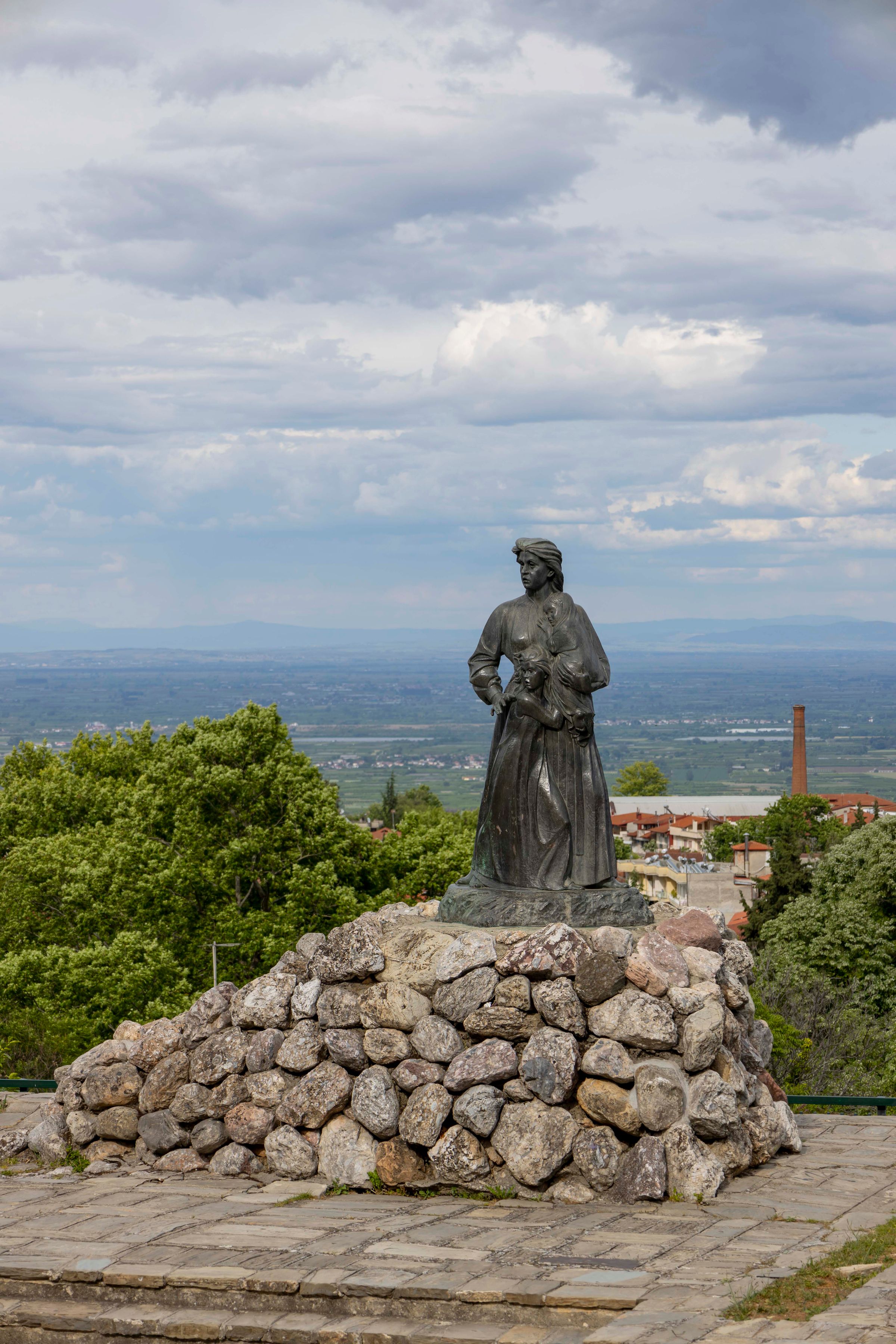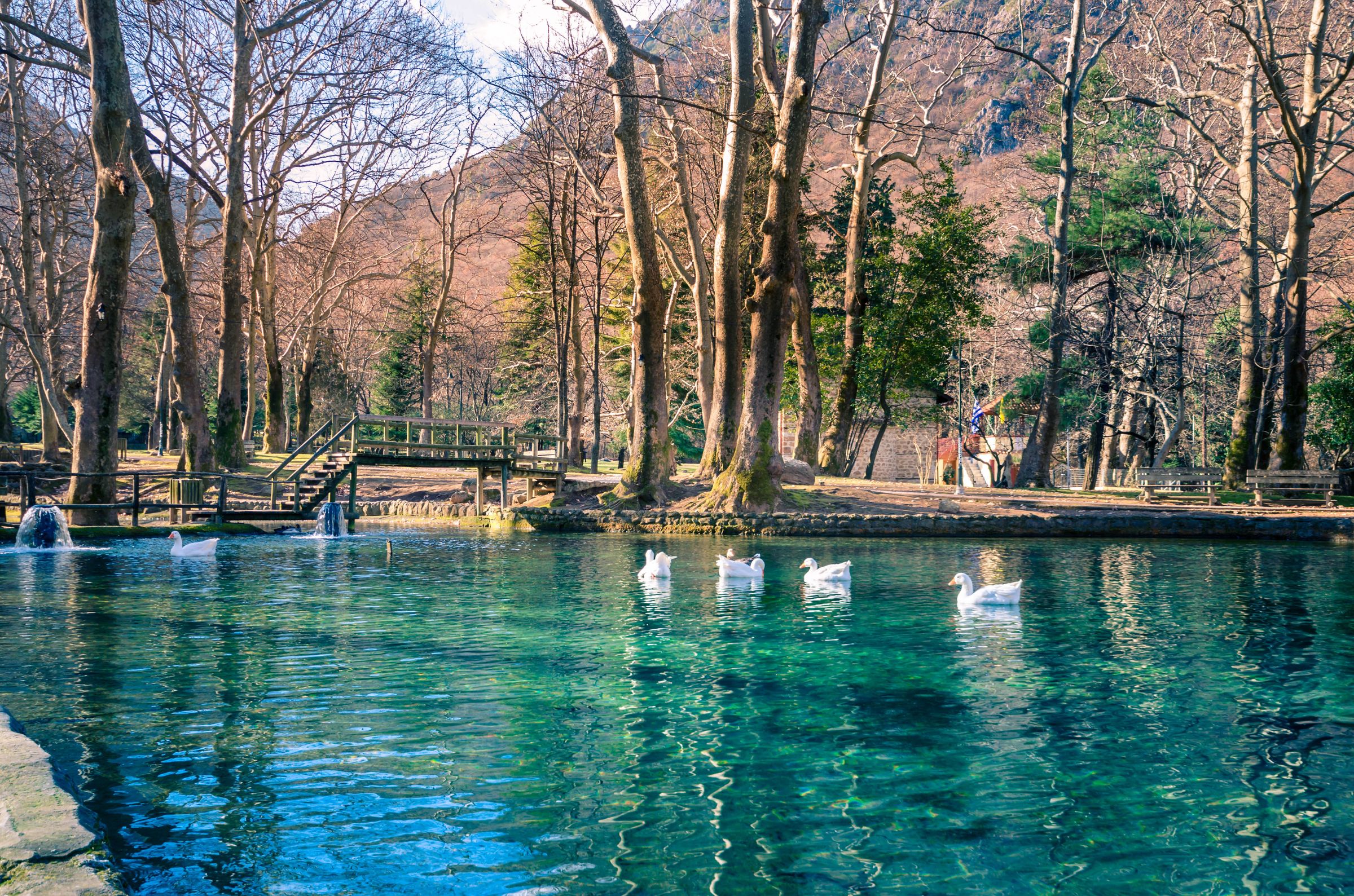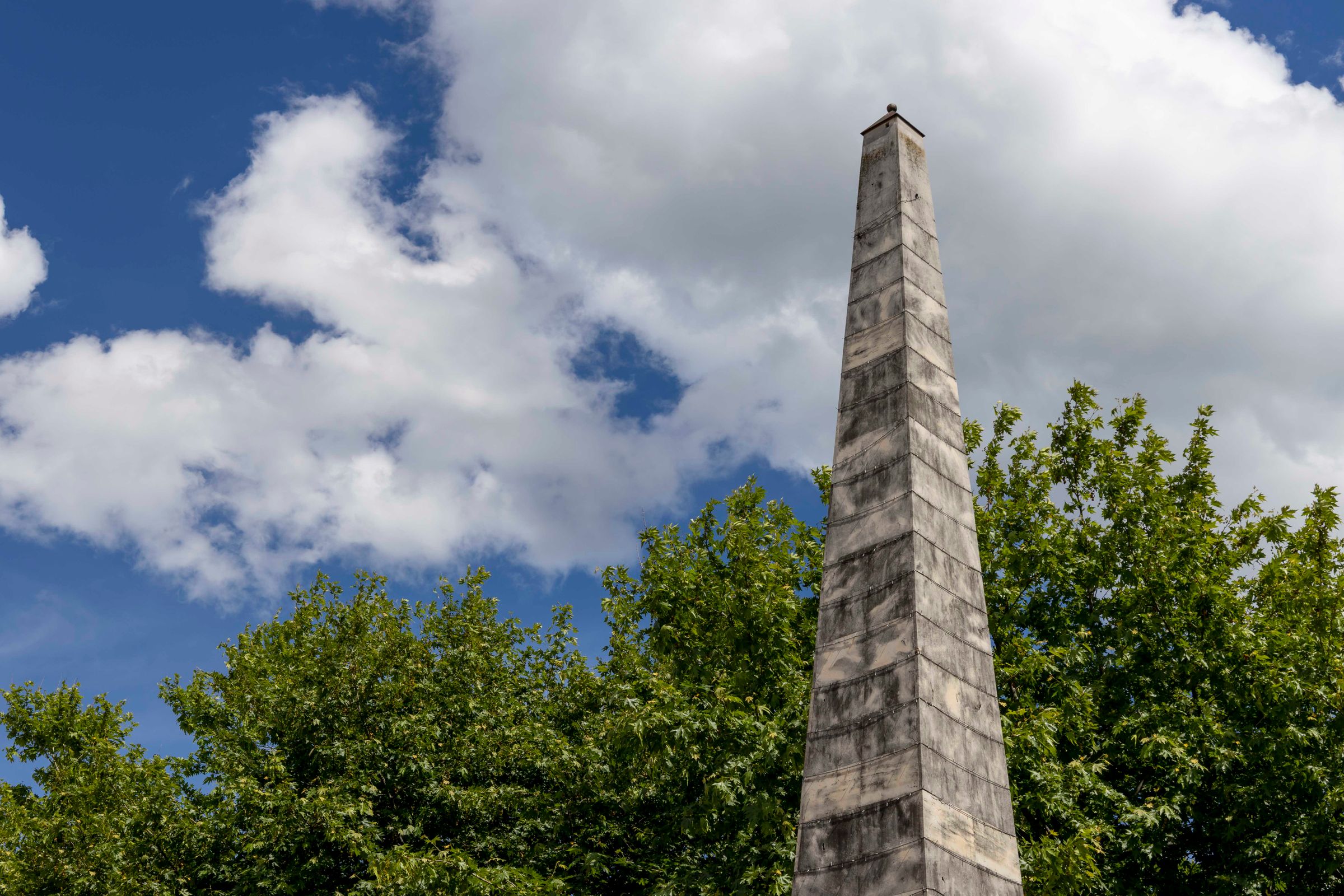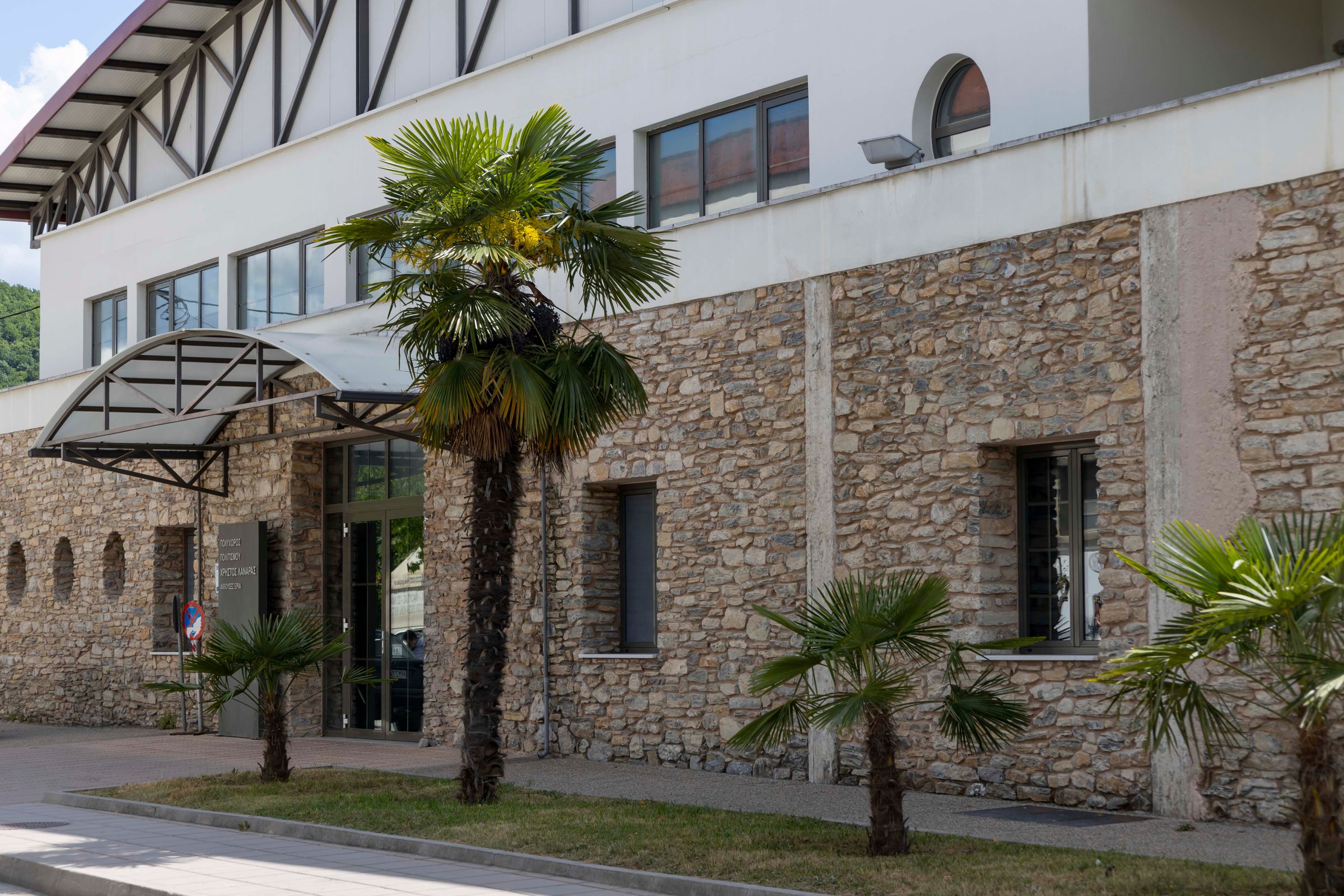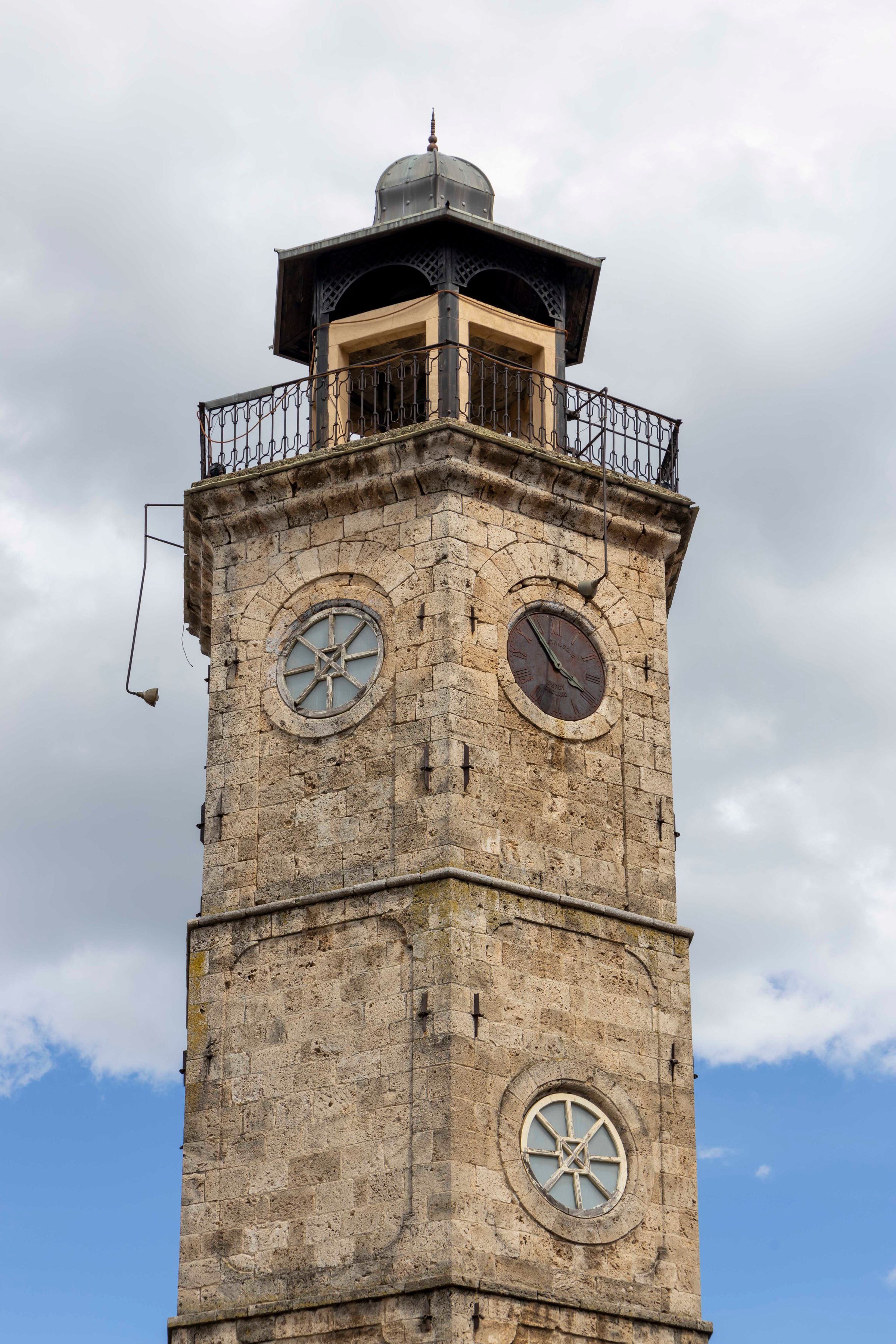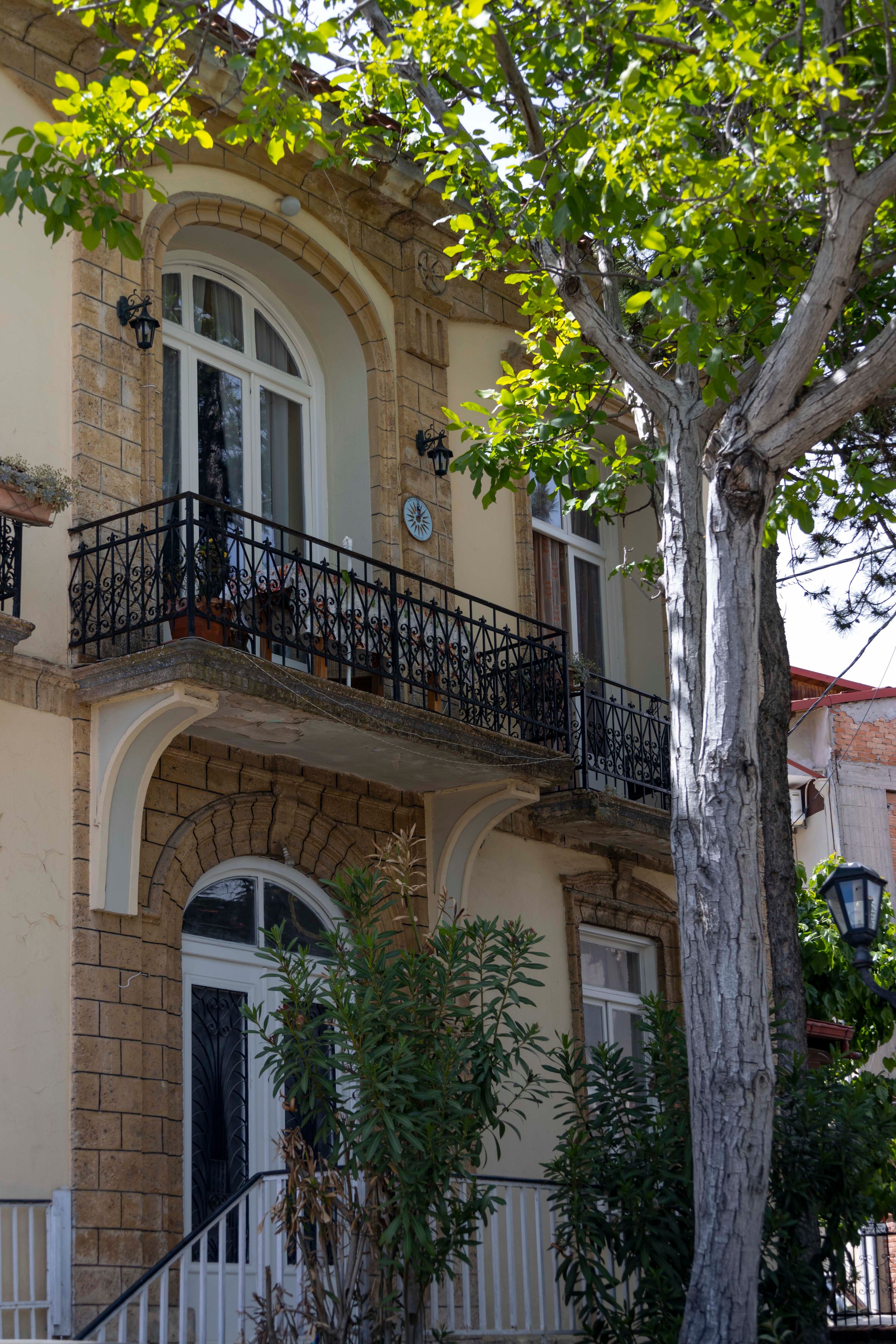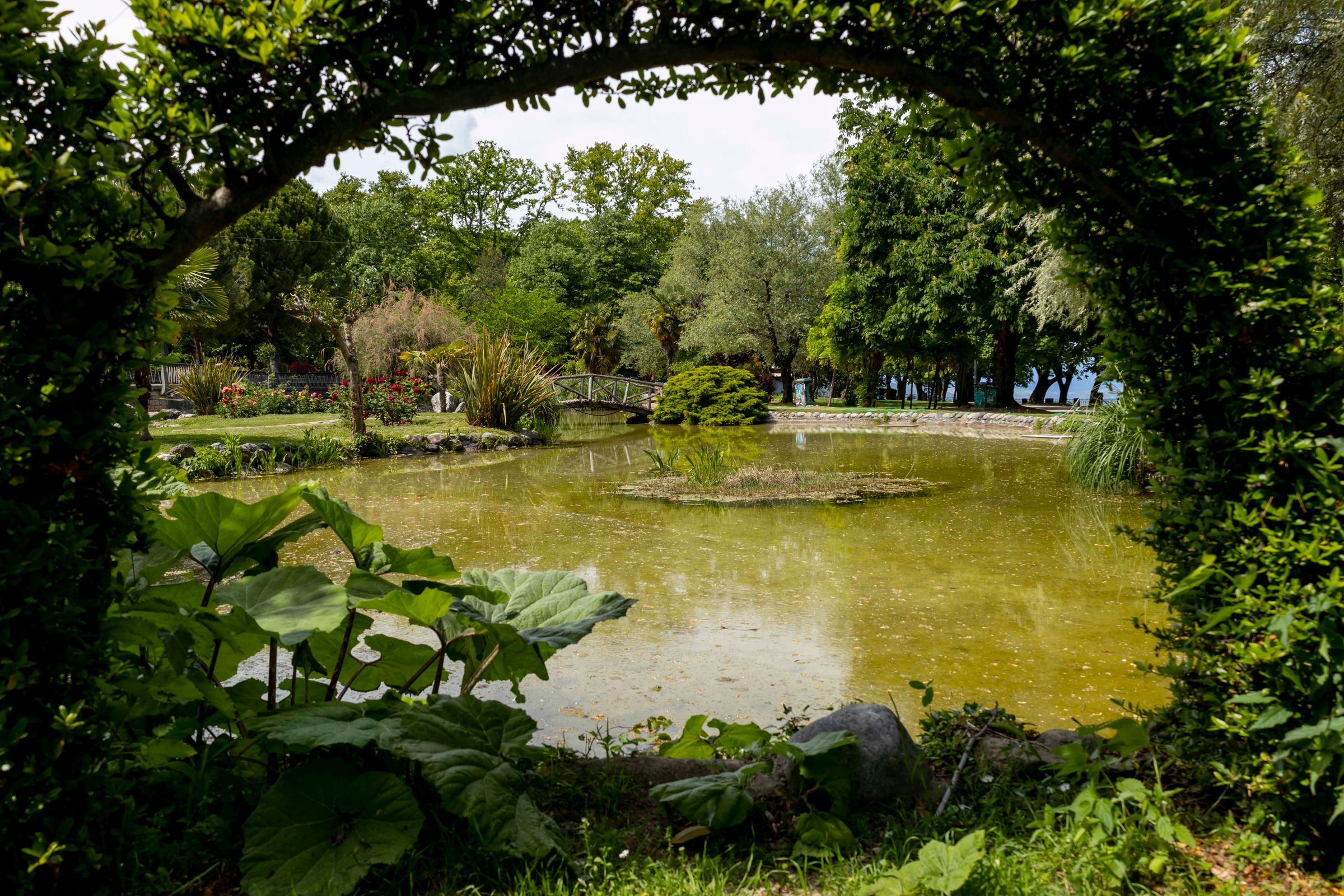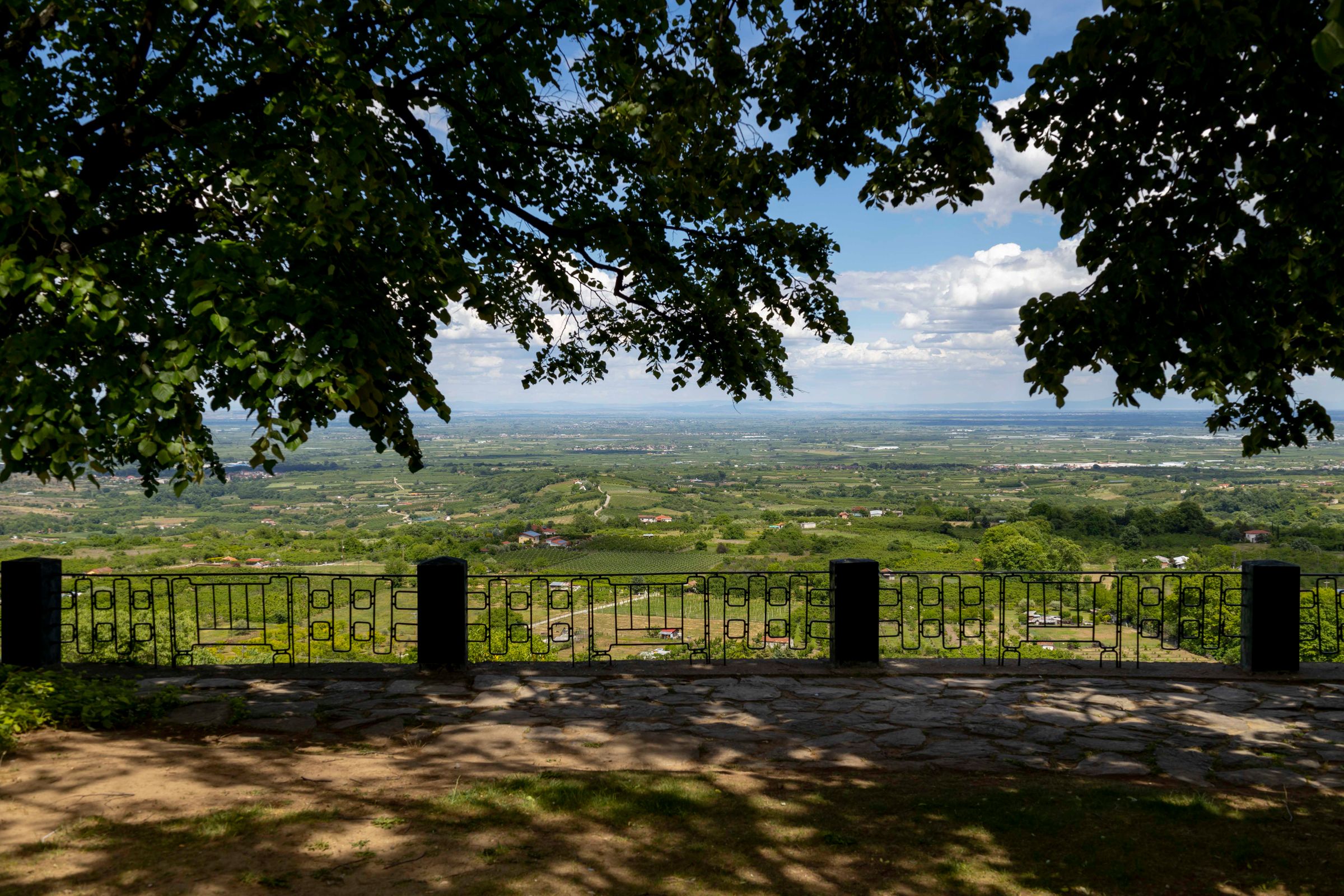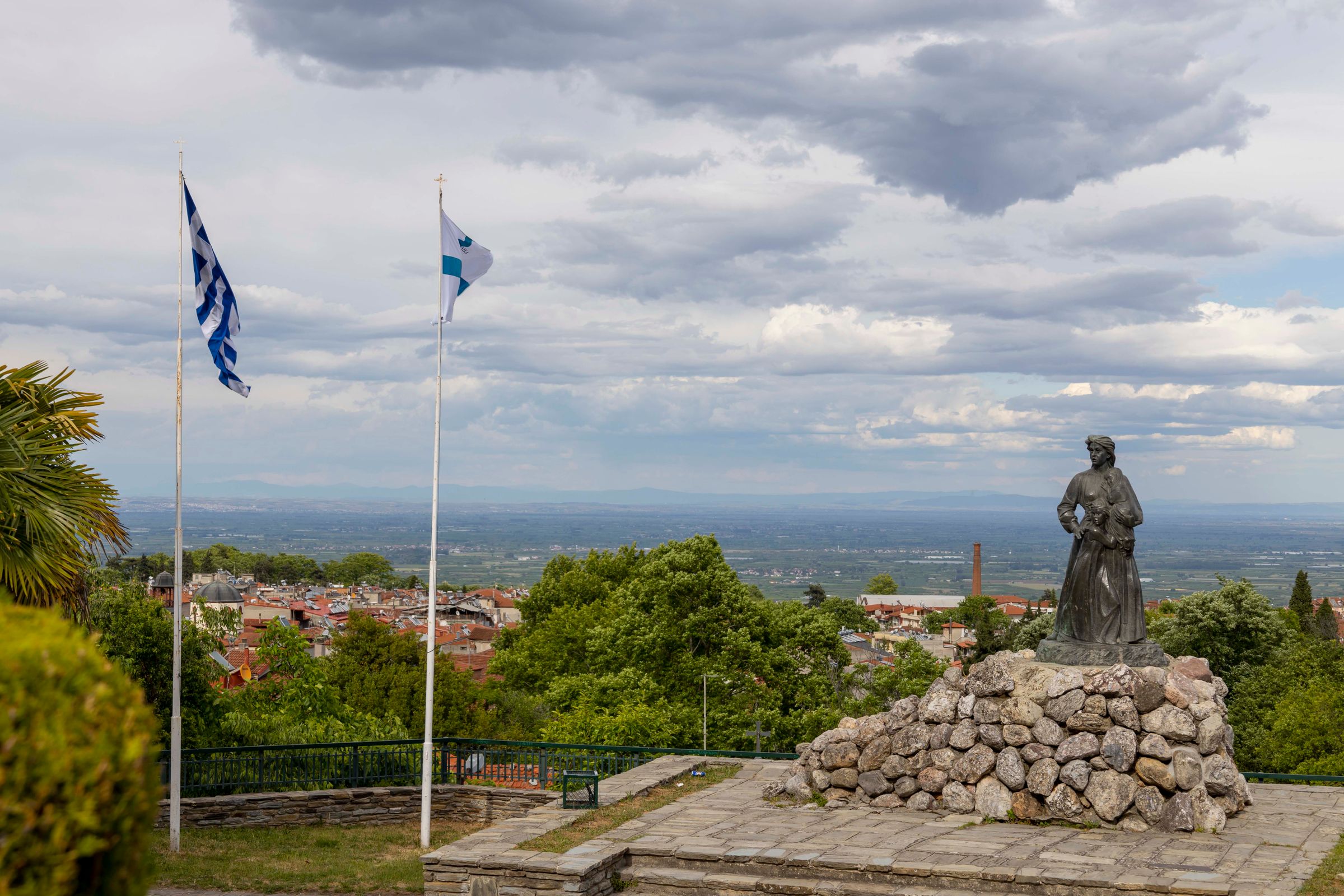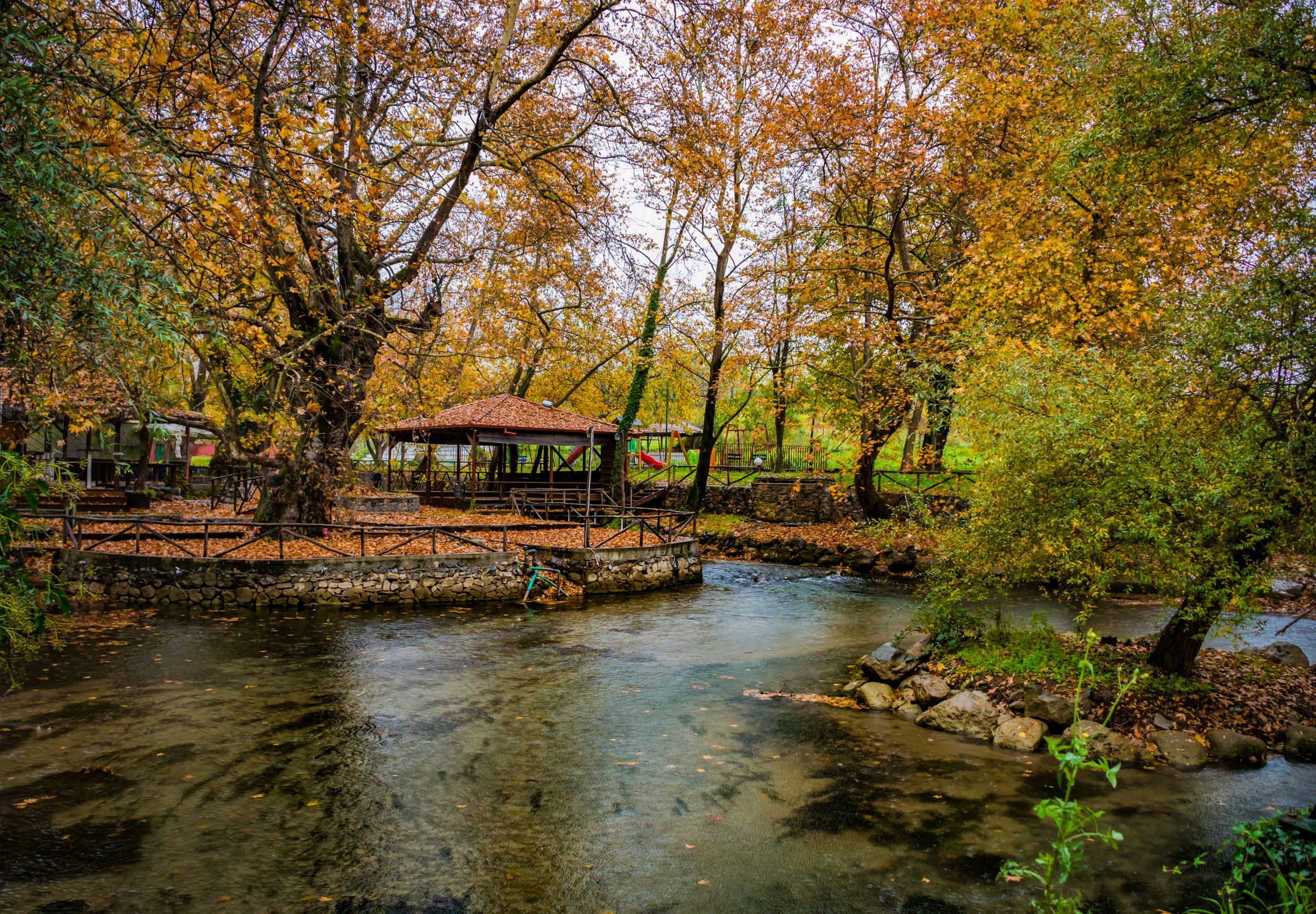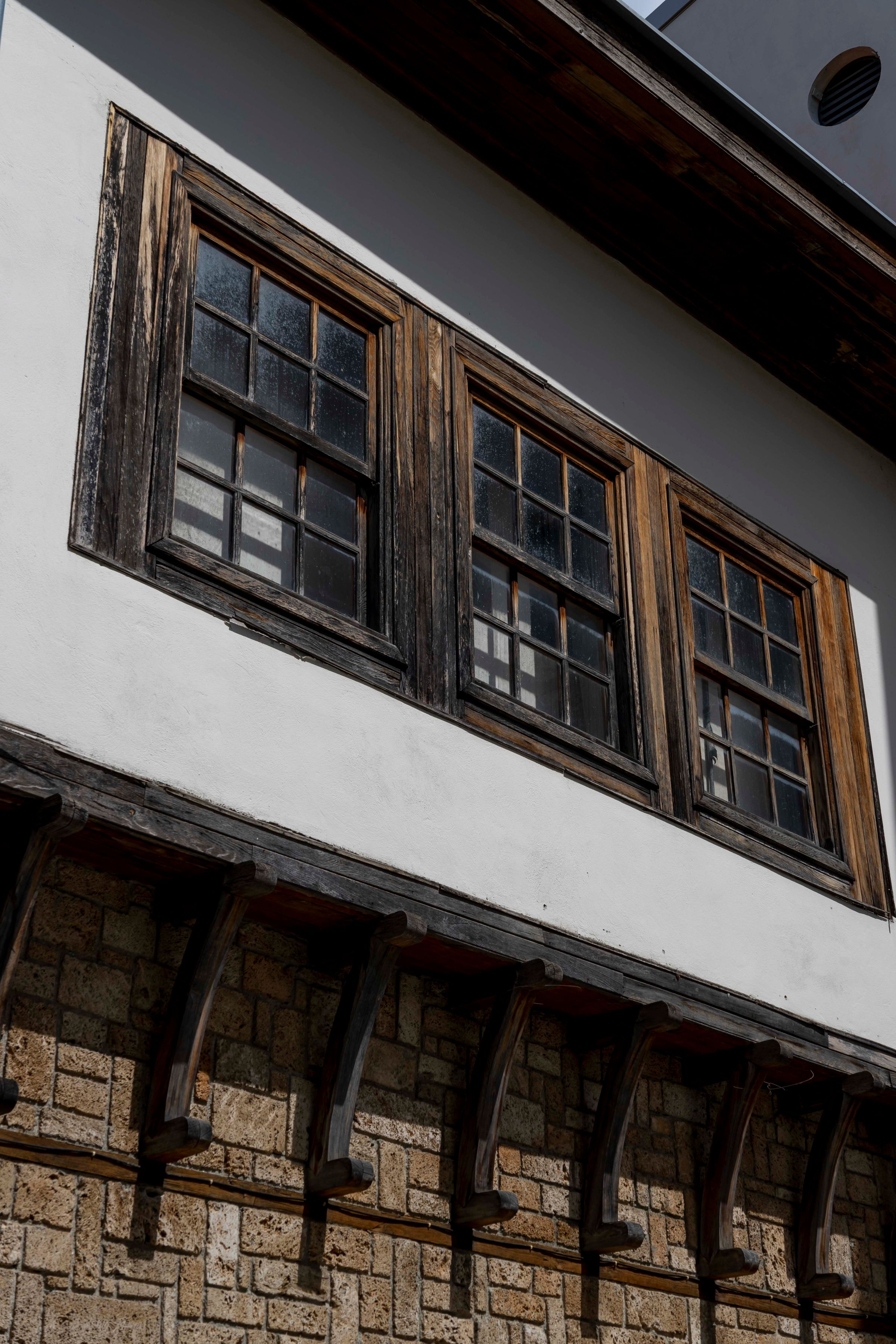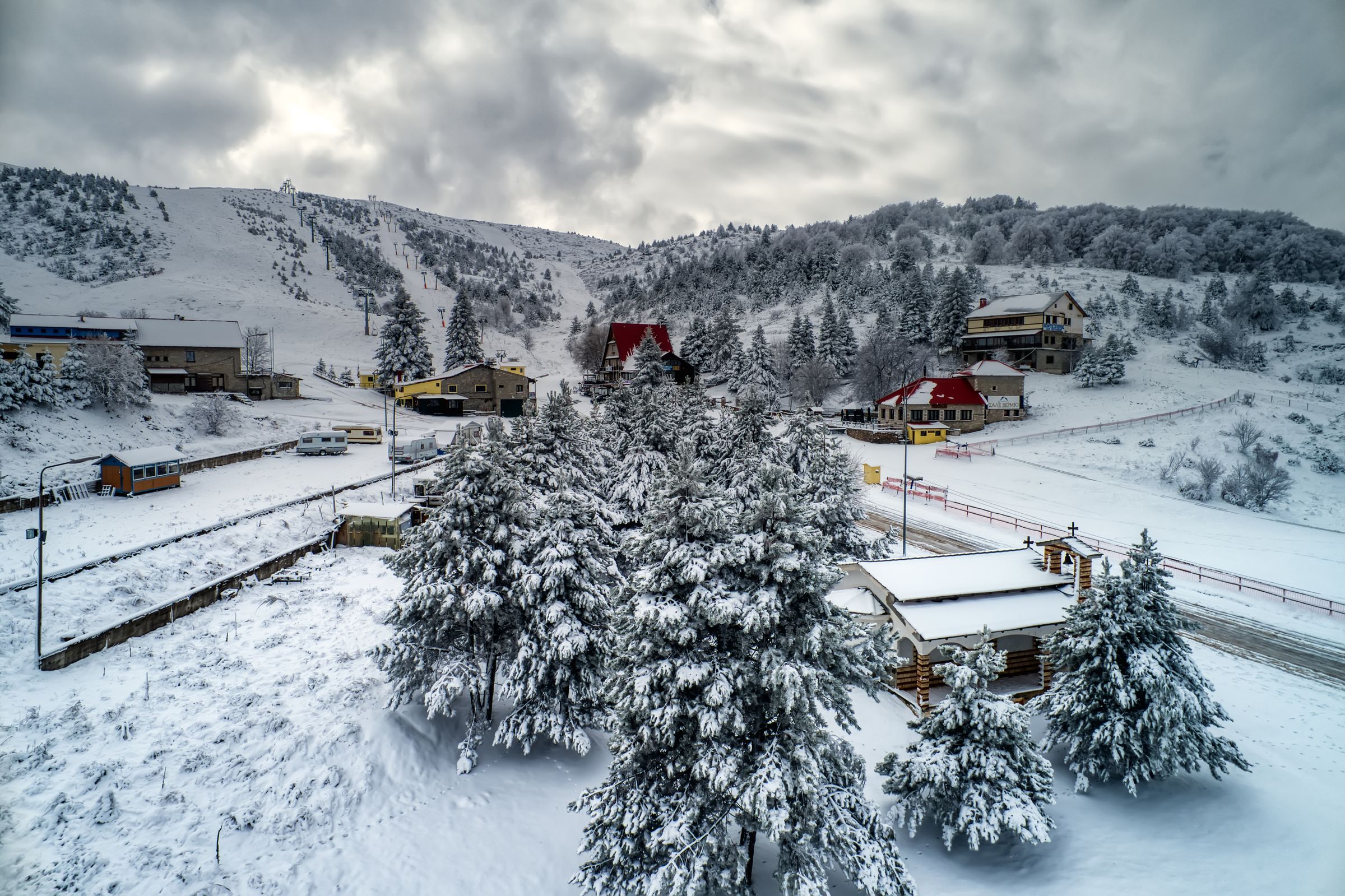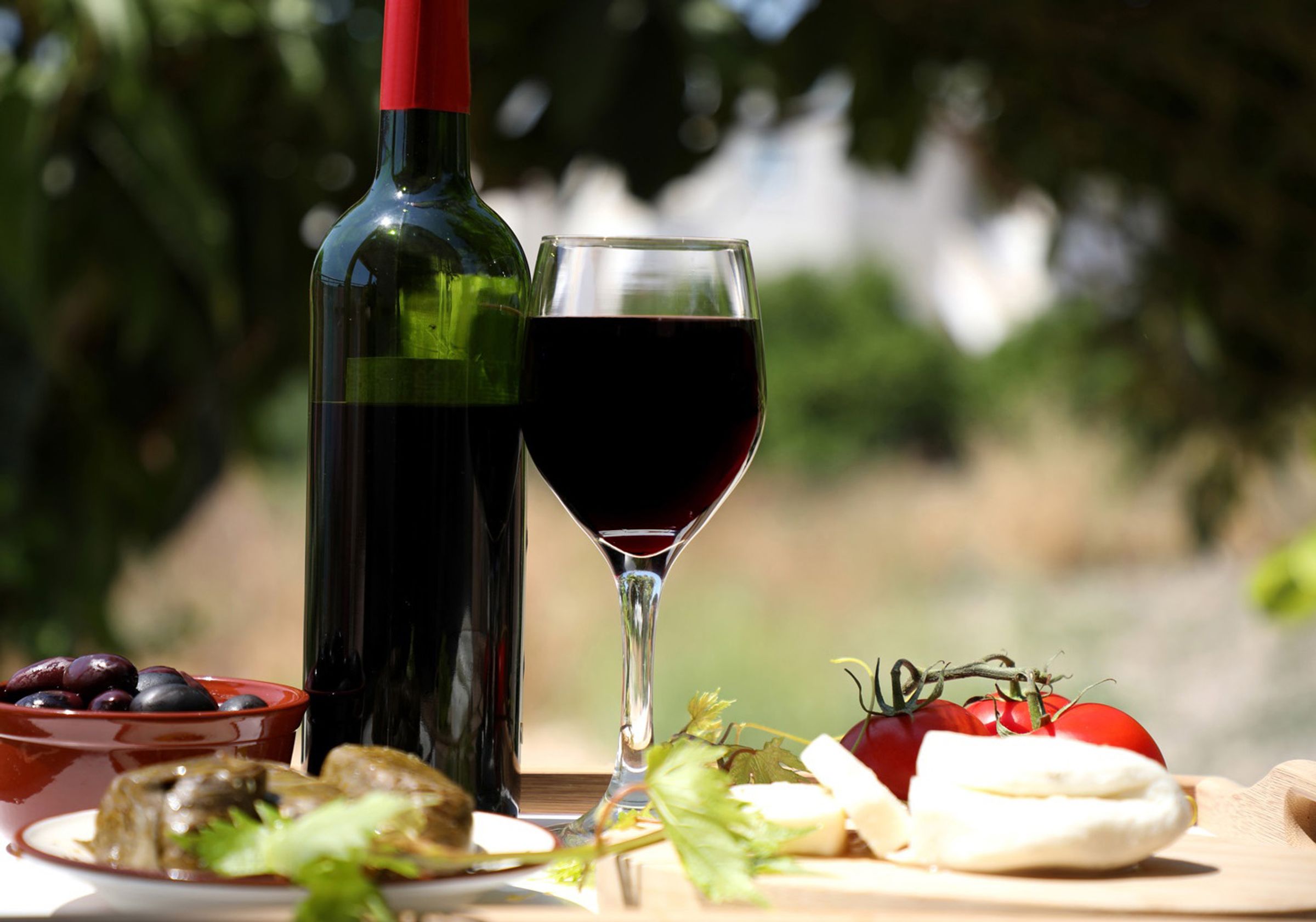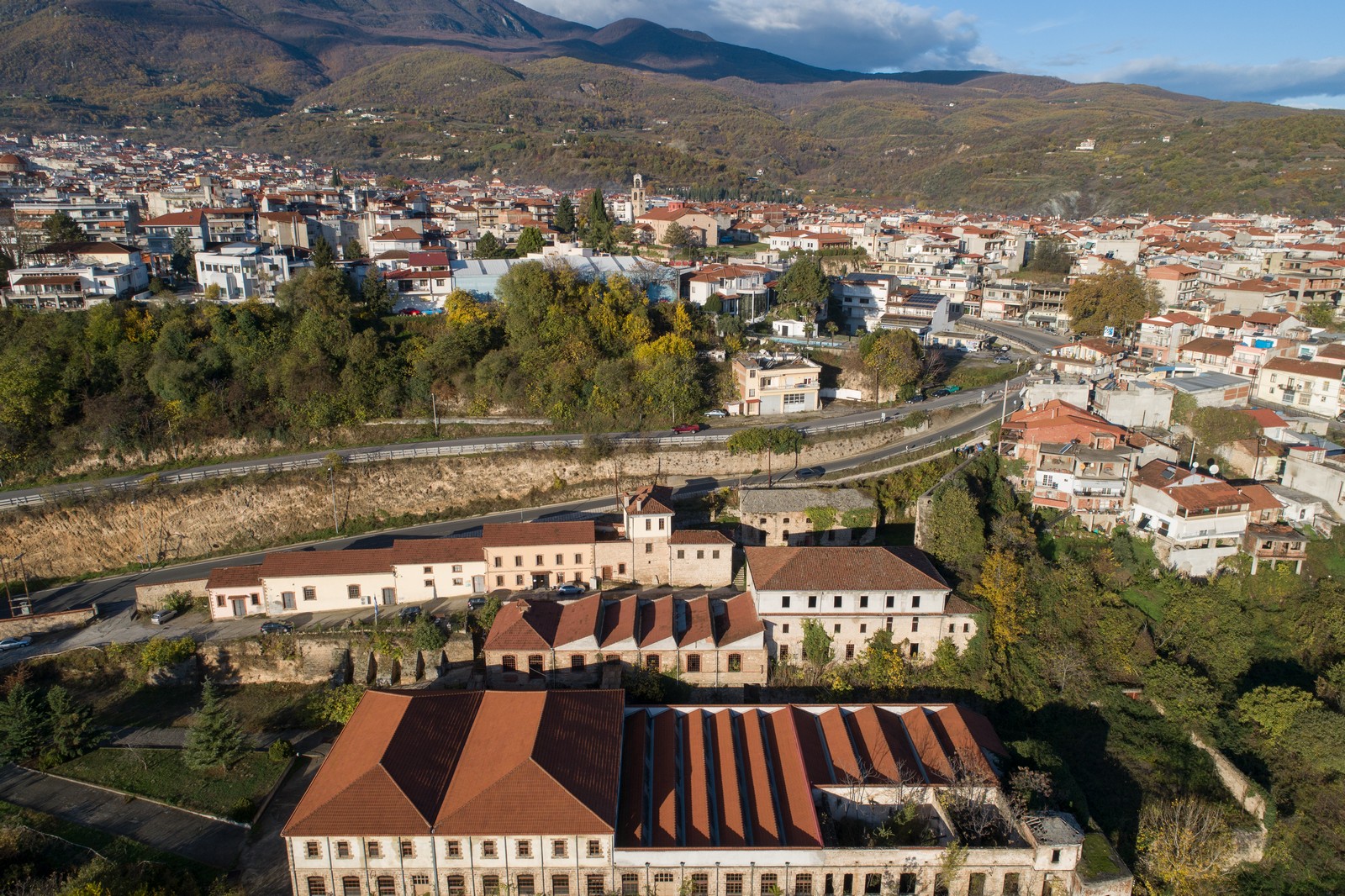
Naoussa
Naoussa
The Heroic City of Vermio
Built on the most beautiful balcony of Mount Vermio—described by Herodotus as inaccessible during the winter—Naoussa, along with its surrounding villages nestled in the mountains and plains, is today the third-largest municipality in Imathia, with a population of 30,054 residents.
Its official title bestowed by the Greek State, “Heroic City of Naoussa,” reflects the historical struggles and sacrifices of its people. They built a place blessed by nature, yet vulnerable to the military conflicts that stemmed from the historical upheavals of the region.
At an altitude of 300 meters, Naousa has continuously taken advantage of its natural surroundings to flourish. The city is crossed by the rushing waters of the Arapitsa River, which nourishes the lush vegetation, powers many factories, and irrigates the fruit trees and vineyards of the area.
Moments of unparalleled heroism and self-sacrifice were written in the waters of the Arapitsa during the Greek War of Independence. In February 1822, Naoussa became a center of the revolution against the Ottoman Turks, under the leadership of Zafeirakis Logothetis and Anastasios Karatasos. Despite their heroic resistance, the city was captured and pillaged. Thousands of residents were either killed or taken captive, while 13 women chose to leap into the Arapitsa River rather than be captured. For the bravery of its people in the face of a powerful enemy and their contribution to the struggle for independence from the Ottoman rule, Naousa is the only city in Greece officially designated as “Heroic,” a title granted by Royal Decree in 1955.
Half a century later, the same river powered the first textile factory in Ottoman Macedonia, founded by Longos, Kyrtsis, and Tourpalis, marking the beginning of an era of industrial innovation for the city and Northern Greece. In the following decades, many more factories were established by Naousa’s entrepreneurs, harnessing the “white coal” of the Arapitsa. Among them was the well-known textile company VETLANS, founded in 1908 by the wealthy businessman Evangelos Lanaras. After decades of operation, the factory closed, but the building remains a symbol of an entire era for Naoussa. Today, it stands as an important landmark of local history and heritage, functioning as a cultural center.
In the area covered by today’s municipality of Naoussa—at the heart of the ancient Macedonian kingdom—the city of Mieza flourished in antiquity. It was here that the renowned philosopher Aristotle taught Alexander the Great and other heirs of the Macedonian royal family, making the city an important center of philosophy and education.
The Municipality of the Heroic City of Naoussa, with its rich forests, is an ideal destination for nature lovers and outdoor enthusiasts. Among the most spectacular places in the region is the grove of Agios Nikolaos, a true earthly paradise. Also noteworthy is the 3-5 Pigadia ski resort, the first in Greece to feature artificial snowmaking, offering excellent conditions for winter sports and a unique experience for visitors each winter.
Naoussa is also known as the “City of Wine and the Vine,” with a winemaking tradition dating back to the 16th century. Its deeply colored and richly flavored Xinomavro wine was officially recognized as a Protected Designation of Origin in 1971. Today, its vineyards span 4,500 acres, with dozens of wineries in operation.


